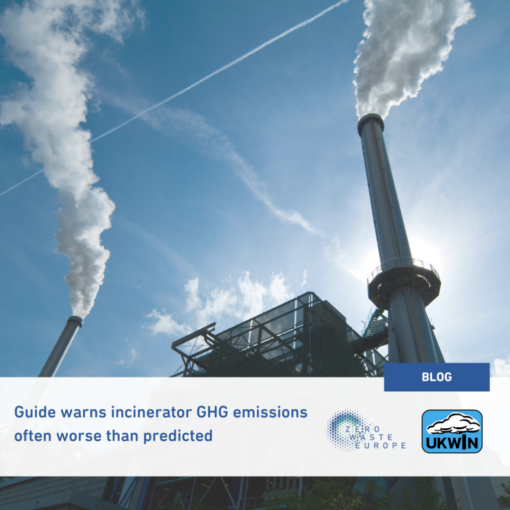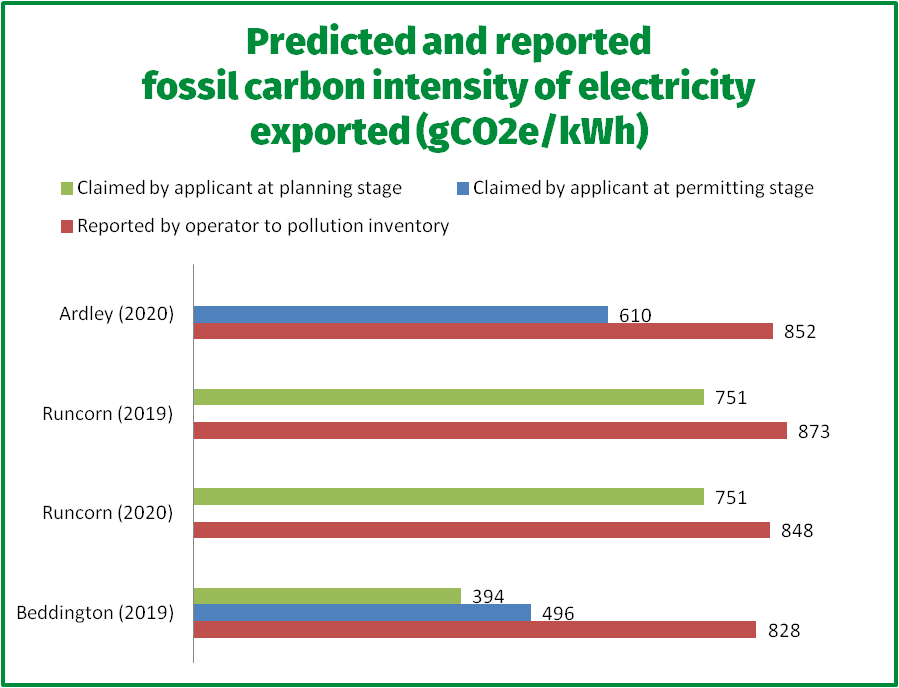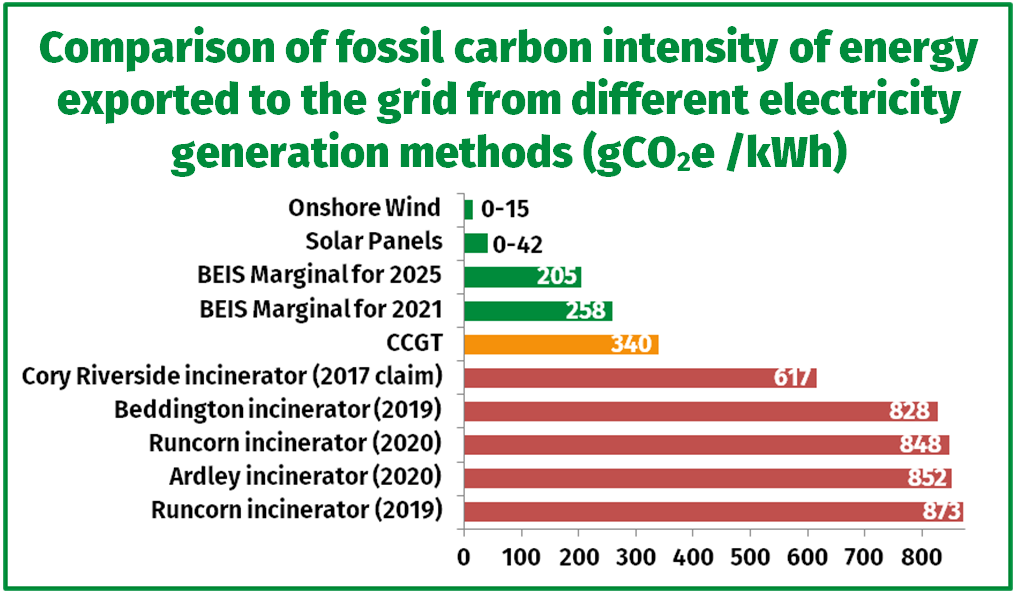
Guide warns incinerator GHG emissions often worse than predicted
In July 2021, the United Kingdom Without Incineration Network (UKWIN) published a good practice guide for assessing the greenhouse gas (GHG) impacts of waste incineration. The guide is intended to be used both by those carrying out climate assessments and by those reviewing or evaluating those assessments.
The guide was created in response to the inconsistent quality of incinerator carbon assessments. It provides ten recommendations based on an extensive review of the approaches being used by industry practitioners and academics.
Recommendations cover key areas such as:
- accounting for the decarbonisation of the electricity supply,
- the impact of increased separate collection of food waste, and
- the potential to recycle much of the material currently used as incinerator feedstock.
Our research found that incinerators often perform significantly worse than modelled for planning applications and environmental permits. Incinerators often deliver lower levels of electricity generation and release higher levels of fossil CO2 emissions, resulting in higher carbon intensity than claimed by those promoting incineration schemes.

Facts not greenwash
The discrepancy between climate claims made for planning and permitting applications and real world performance of incinerators is a concern. At a time when we need facts and not greenwashing, it is vital for those assessing climate claims to follow the science, and that means acknowledging the huge adverse environmental impacts of burning waste.

Building new incinerators costs hundreds of millions of pounds, locking us into burning waste for decades to come. It is therefore essential that those assessing proposals for new incineration capacity take account of the full climate impacts and opportunity costs.

Despite the facts about the climate harm caused by incineration, this relic of the linear economy is still being marketed as an environmentally-friendly alternative to landfill. Incineration exists alongside landfill as something from which we need to move away due to the adverse climate impacts of waste incineration, especially as we move towards a Net Zero circular economy.
The choice is not simply between incineration and landfill, it is between the circular economy and the linear economy, and there is no doubt that incineration is a relic of the unsustainable linear economy that needs to be phased out.
The Guide is for you to use
UKWIN is already using the Guide to inform our planning objections. An example of this can be found here. Although the real world data used to inform the Guide comes from England, the recommendations apply wherever the climate impacts of a waste incinerator is being assessed.
The Guide includes many examples of good practice, offering authoritative quotes that can be used and reused to make the point about the adverse climate impacts of waste incineration. The Guide also provides ways to correct for errors, such as the failure to properly account for the way that landfill acts as a carbon sink, sequestering carbon that would be released as CO2 through incineration.
It is always right to expect modelling assumptions to be transparent and verifiable, to ensure that outputs are internally consistent with inputs. It is simply a matter of good practice to use sensitivity analysis to show the impacts of future changes such as increased food and biowaste collection.
The discrepancy between predicted and actual carbon performance needs to be taken into account when modelling, and robust sensitivity analysis is needed to ensure that CO2e emissions from incineration are not significantly underestimated.
Zero Waste campaigners are right to insist that, when considering how waste would be treated if it were not sent to an incinerator, account should be taken that it might otherwise have been reduced, reused, recycled or composted – and that account should be made of how landfilled waste could be bio-stabilised to reduce methane emissions.
As Zero Waste Europe’s Climate, Energy and Air Pollution Coordinator, Janek Vähk argues that sorting residual waste is necessary to mitigate climate change. Case studies provide good examples of how a commitment to Zero Waste can result in significant improvements to recycling rates and waste minimisation helping reduce levels of residual waste.
See the Report’s Recommendations Here.
Shlomo Dowen is the National Coordinator at UKWIN.